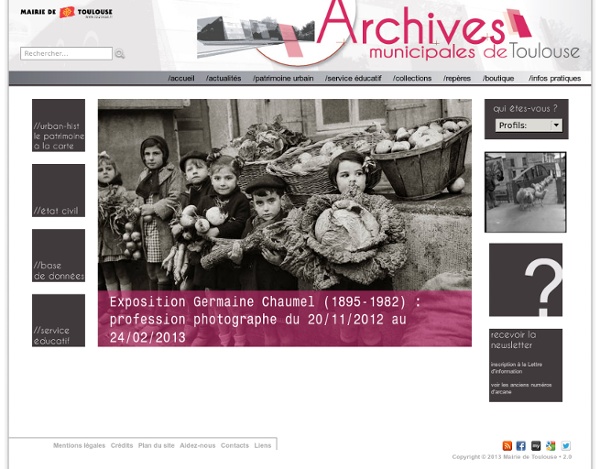



DADI Près de 20 ans après sa création, le répertoire de bases de Données grAtuites Disponibles sur Internet ferme ses portes. Crée en 1996 Dadi, produit pionnier et phare de l’URFIST de Lyon, a eu pour objectif de recenser les ressources libres disponibles sur le Web à une époque où ce dernier faisait ses premiers pas, sans moteurs de recherches. Jean Pierre Lardy, alors co-responsable de l’Urfist de Lyon et enseignant chercheur en physique, a imaginé puis animé Dadi pendant une quinzaine d’années, dans le but de donner à voir les ressources du web invisible en libre accès utiles au monde académique. Véritable aide à la recherche dans un univers en pleine mutation, DADI connaîtra un usage important et comptera parmi les ressources incontournables en France pour la recherche d’information. Son impact rayonnera dans les pays francophones comme la Belgique et le Canada. La Bibliothèque Nationale de France a réalisé un archivage régulier de Dadi.
Small Scale, Big Change | Casa Familiar: Living Rooms at the Border and Senior Housing with Childcare The back-and-forth movement of materials, people, and ideas across the United States–Mexico border between San Diego and Tijuana has long been an important focus of Teddy Cruz’s practice. In 2001 Cruz began working with the community-based nongovernmental organization Casa Familiar to develop a pilot housing project for an area of San Ysidro, an American city just north of the border. According to Casa Familiar—which advocates for and assists the marginal community in such areas as immigration services, education, and job placement—some two-thirds of San Ysidro’s homes are multifamily; the median income for residents is sixty percent lower than it is in the rest of San Diego County. Having studied a variety of ad hoc uses of land in this formerly homogenous suburban area, Cruz aimed to create a complex system of housing, with integrated shared space that would acknowledge and exploit the dense, multiuse, and often illegal development that is standard there.
Base Joconde BOUDIN Eugène, Venise, La douane et Notre-Dame-de-la-Salute, huile sur bois, 1895, Reims, musée des beaux-arts © Christian Devleeschauwer1/28 Costume de China Poblana, Mexique, coton, laine, sequin, perle de verre, 4e quart 19e siècle, 1er quart 20e siècle, Barcelonnette, musée de la Vallée, © BERNARD Jean2/28 MAISON J ROTHSCHILD & Fils et RHEIMS & AUSCHER, Modèle de landau à huit ressorts, crayon graphite sur papier bristol, 4e quart 19e siècle - 20e siècle, Compiègne, musée national de la voiture et du tourisme © Arkhênum ; Compiègne, musée national de la voiture et du tourisme - utilisation soumise à autorisation3/28 Portrait de Tiberius Gemellus ? DE DIETRICH, Saint Georges terrassant le dragon, bas-relief, fonte moulée, entre 1950 et 1960, Reichshoffen, musée historique et industriel, musée du fer © Pommois Etienne28/28
Counter Space: Design and the Modern Kitchen Meal machine, experimental laboratory, status symbol, domestic prison, or the creative and spiritual heart of the home? Over the course of the past century no other room has been the focus of such intensive aesthetic and technological innovation, or as loaded with cultural significance. Kitchen design has been both a central concern of modernism and fundamental to our concept of modern life. The New Kitchen, an interwar design concept that embodied modernist principles of efficiency, hygiene, and standardization, appeared in numerous iterations throughout Europe and the United States. Visions of Plenty examines how the innovations of Schütte-Lihotzky’s generation were extended and modified after World War II by the consumer revolution and Cold War politics. Kitchen Sink Dramas offers psychologically nuanced views of lived experience in this hub of domestic activity—its nightmares and delights—seen in works of art made since the 1960s. Permalink Too Young to Marry1931. Sprucin’ Up1935.